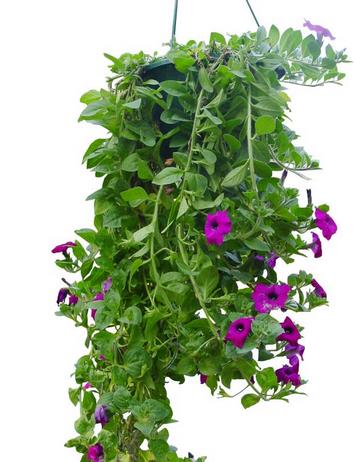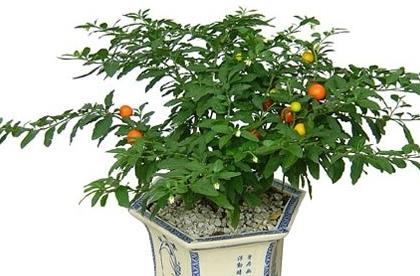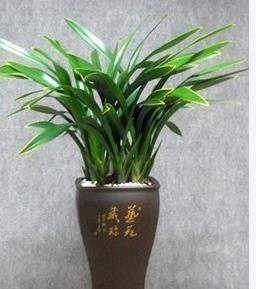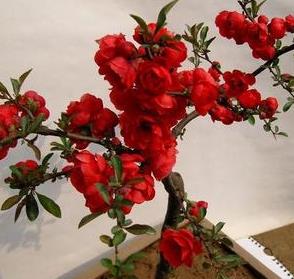How about flower bonsai?
It is easy to pollute the environment by using pesticides to control flower and plant diseases and insect pests. Four methods of safe control of flower and plant diseases and insect pests are introduced.
I. spraying method

(1) the aphids above plum blossom, rose and pomegranate can be killed by soaking in 0.5 kg of plant ash and 2.5 kg of water for 24 hours and spraying its filtrate.
(2) spraying with 0.1% baking soda solution can control powdery mildew of rose, chrysanthemum, impatiens, hibiscus, melon and leaf chrysanthemum and other flowers, and the prevention and treatment rate can reach more than 80%.
(3) spraying 2% urea solution every 10 days for 2 to 3 times can kill aphids, red spiders and other pests on flowers and trees.
2. Smear method
The main results are as follows: (1) dipping cotton balls in vinegar and gently rubbing on camellia leaves can not only kill shell insects, but also turn green leaves that have been damaged by shell insects.
(2) the shell insects can be removed by repeatedly rubbing the leaves of orchids with alcohol.
(3) if the branches of the stump bonsai are rotten, scrape off the rotten part of the stump with a blade sterilized with iodine, then apply iodine wine and rub it once every 7 to 10 days to prevent further decay.
III. Fertilizer application method
The main results are as follows: (1) mixing a small amount of silicon fertilizer to flowers and trees can improve the hardness of their epidermal cells and enhance the ability of resistance to insect pests.
(2) frequent sprinkling of plant ash can not only greatly reduce the incidence of Botrytis cinerea in flowers such as peony, tulips and cyclamen, but also promote the stout branches and colorful flowers.
IV. Injection method

Woody flowers are often harmed by longicorn beetles, gibberries, wood moths and other trunk borers, which can seriously lead to hollow branches. In order to control such pests, the larval eggs can be killed by injecting 20 to 30 milliliters of ammonia with 20% concentration into the wormhole during the larval incubation period, before adult Eclosion and when the larvae are overwintering, and then seal the wormhole with clay or wax.
Rugen bonsai
① was planted shallowly and picked root. The semi-finished stumps with well-developed main roots and easy to shape were selected for cultivation in shallow pots. The lateral root of the root base is chic exposed to the basin soil. If the lateral root at the base of the tree root should not be exposed directly, the root can be picked out of the basin by the method of picking the root, and the exposed root can be cultivated reasonably combined with the form of tree stump.
② Tigan Rugen. Cultured in a deep basin. By changing the basin and other measures, the root is raised higher than the basin soil year by year to achieve the purpose of ornamental. You can also first expose part of the roots to the basin and then cultivate the soil, grow for a period of time, and then remove the soil to promote early growth.
③ cuttings. For stumps that are not suitable for direct root exposure, for example, the stump foundation will grow branches, after semi-Lignification, peel the branches around and press them into the basin soil, and cut off the branches in time after taking root, so as to achieve the purpose of rooting.
Bushy bonsai
① chooses a shallow basin, which can show the wild taste of the jungle, wilderness amorous feelings, make the tree bigger and give people a more far-reaching vision. It can also pile up mounds, stones and scenery in the shallow basin to make the bonsai more lively.
② jungle bonsai materials are generally small shrubs, in the planting of different sizes, height is wrong, otherwise the landscape is rigid, lack of vitality. In the production of ③ jungle bonsai, the stump should be advanced and retreated, the space should be sparse and dense, and the composition should have ups and downs. It should have the feeling of forest and do not make people feel suffocated.

If the trees in the ④ bonsai are not pruned for a long time, they often have horizontal branches and are entangled. Therefore, it should be pruned at any time to maintain the spatial structure and dense relationship, and improve the ornamental value.
Miniature bonsai
① takes materials for styling. Miniature bonsai materials, generally choose small branches and fine leaves, easy to work on the pot, strange roots, beautiful flowers and fruits, easy to shape materials, such as five-leaf pine, lobular Luohan pine, fine leaf holly, June snow, asparagus, sparrow plum and so on. You can also dig out suitable stumps and plant them in the wild. Brown wire ligation, lead wire winding, branch folding and other methods are often used in modeling.
② is maintained in pot. The trees should be transplanted from the mud basin to the purple sand basin or glaze basin at the same time. General tall and deep cylinder basin, suitable for cliff type; oval or shallow rectangular basin, suitable for straight dry or oblique dry type; polygonal shallow basin, and planting high dry type; round basin can be equipped with low disc plants. Conservation after planting: the basin soil should always be kept moist, the temperature should be kept at a suitable temperature in winter, and it should be placed in a shady place in midsummer. During the growth period, thin fertilizer should be applied frequently, usually once every 10 days. Can apply rotten bean cake, hoof water, etc., can also apply all-element compound flower fertilizer.
Rugen bonsai
① was planted shallowly and picked root. The semi-finished stumps with well-developed main roots and easy to shape were selected for cultivation in shallow pots. The lateral root of the root base is chic exposed to the basin soil. If the lateral root at the base of the tree root should not be exposed directly, the root can be picked out of the basin by the method of picking the root, and the exposed root can be cultivated reasonably combined with the form of tree stump.
② Tigan Rugen. Cultured in a deep basin. By changing the basin and other measures, the root is raised higher than the basin soil year by year to achieve the purpose of ornamental. You can also first expose part of the roots to the basin and then cultivate the soil, grow for a period of time, and then remove the soil to promote early growth.
③ cuttings. For stumps that are not suitable for direct root exposure, for example, the stump foundation will grow branches, after semi-Lignification, peel the branches around and press them into the basin soil, and cut off the branches in time after taking root, so as to achieve the purpose of rooting.
Bushy bonsai
① chooses a shallow basin, which can show the wild taste of the jungle, wilderness amorous feelings, make the tree bigger and give people a more far-reaching vision. It can also pile up mounds, stones and scenery in the shallow basin to make the bonsai more lively.
② jungle bonsai materials are generally small shrubs, in the planting of different sizes, height is wrong, otherwise the landscape is rigid, lack of vitality. In the production of ③ jungle bonsai, the stump should be advanced and retreated, the space should be sparse and dense, and the composition should have ups and downs. It should have the feeling of forest and do not make people feel suffocated.
If the trees in the ④ bonsai are not pruned for a long time, they often have horizontal branches and are entangled. Therefore, it should be pruned at any time to maintain the spatial structure and dense relationship, and improve the ornamental value.
Miniature bonsai

① takes materials for styling. Miniature bonsai materials, generally choose small branches and fine leaves, easy to work on the pot, strange roots, beautiful flowers and fruits, easy to shape materials, such as five-leaf pine, lobular Luohan pine, fine leaf holly, June snow, asparagus, sparrow plum and so on. You can also dig out suitable stumps and plant them in the wild. Brown wire ligation, lead wire winding, branch folding and other methods are often used in modeling.

② is maintained in pot. The trees should be transplanted from the mud basin to the purple sand basin or glaze basin at the same time. General tall and deep cylinder basin, suitable for cliff type; oval or shallow rectangular basin, suitable for straight dry or oblique dry type; polygonal shallow basin, and planting high dry type; round basin can be equipped with low disc plants. Conservation after planting: the basin soil should always be kept moist, the temperature should be kept at a suitable temperature in winter, and it should be placed in a shady place in midsummer. During the growth period, thin fertilizer should be applied frequently, usually once every 10 days. Can apply rotten bean cake, hoof water, etc., can also apply all-element compound flower fertilizer.
Peel the branches around, press them into the basin soil, and cut off the branches in time after taking root, so as to achieve the purpose of revealing roots.
Bushy bonsai
① chooses a shallow basin, which can show the wild taste of the jungle, wilderness amorous feelings, make the tree bigger and give people a more far-reaching vision. It can also pile up mounds, stones and scenery in the shallow basin to make the bonsai more lively.
② jungle bonsai materials are generally small shrubs, in the planting of different sizes, height is wrong, otherwise the landscape is rigid, lack of vitality. In the production of ③ jungle bonsai, the stump should be advanced and retreated, the space should be sparse and dense, and the composition should have ups and downs. It should have the feeling of forest and do not make people feel suffocated.
If the trees in the ④ bonsai are not pruned for a long time, they often have horizontal branches and are entangled. Therefore, it should be pruned at any time to maintain the spatial structure and dense relationship, and improve the ornamental value.
Miniature bonsai

① takes materials for styling. Miniature bonsai materials, generally choose small branches and fine leaves, easy to work on the pot, strange roots, beautiful flowers and fruits, easy to shape materials, such as five-leaf pine, lobular Luohan pine, fine leaf holly, June snow, asparagus, sparrow plum and so on. You can also dig out suitable stumps and plant them in the wild. Brown wire ligation, lead wire winding, branch folding and other methods are often used in modeling.

② is maintained in pot. The trees should be transplanted from the mud basin to the purple sand basin or glaze basin at the same time. General tall and deep cylinder basin, suitable for cliff type; oval or shallow rectangular basin, suitable for straight dry or oblique dry type; polygonal shallow basin, and planting high dry type; round basin can be equipped with low disc plants. Conservation after planting: the basin soil should always be kept moist, the temperature should be kept at a suitable temperature in winter, and it should be placed in a shady place in midsummer. During the growth period, thin fertilizer should be applied frequently, usually once every 10 days. Can apply rotten bean cake, hoof water, etc., can also apply all-element compound flower fertilizer.
Related
- Wuhan Hospital Iron Tree Blooming Result Was Instantly Frightened by the Gardener Master
- Which variety of camellia is the most fragrant and best? Which one do you like best?
- What is the small blue coat, the breeding methods and matters needing attention of the succulent plant
- Dormancy time and maintenance management of succulent plants during dormancy
- Minas succulent how to raise, Minas succulent plant pictures
- What are the varieties of winter succulent plants
- How to raise succulent plants in twelve rolls? let's take a look at some experience of breeding twelve rolls.
- Attention should be paid to water control for succulent plants during dormant period (winter and summer)
- Watering experience of twelve rolls of succulent plants
- Techniques for fertilizing succulent plants. An article will let you know how to fertilize succulent plants.



